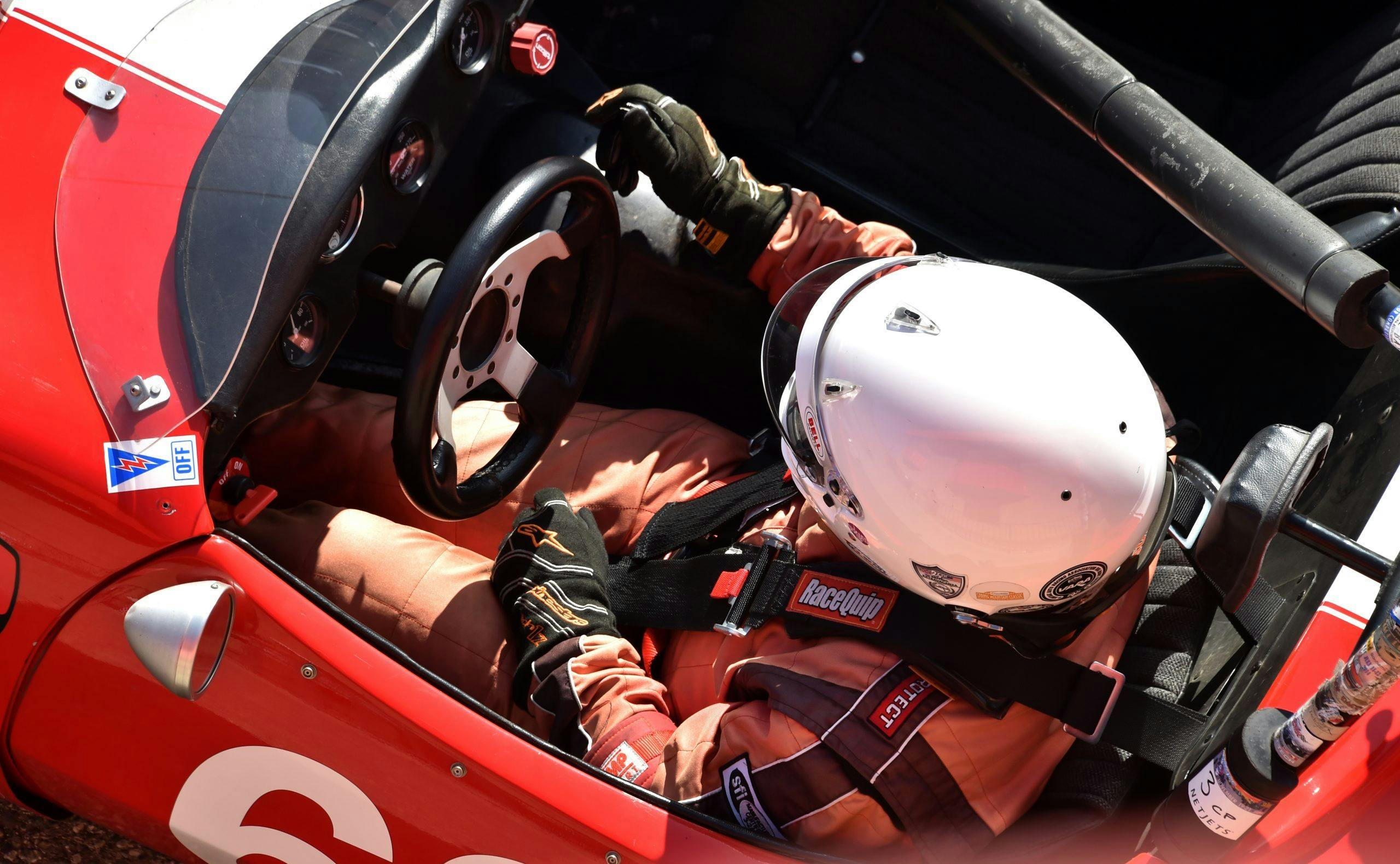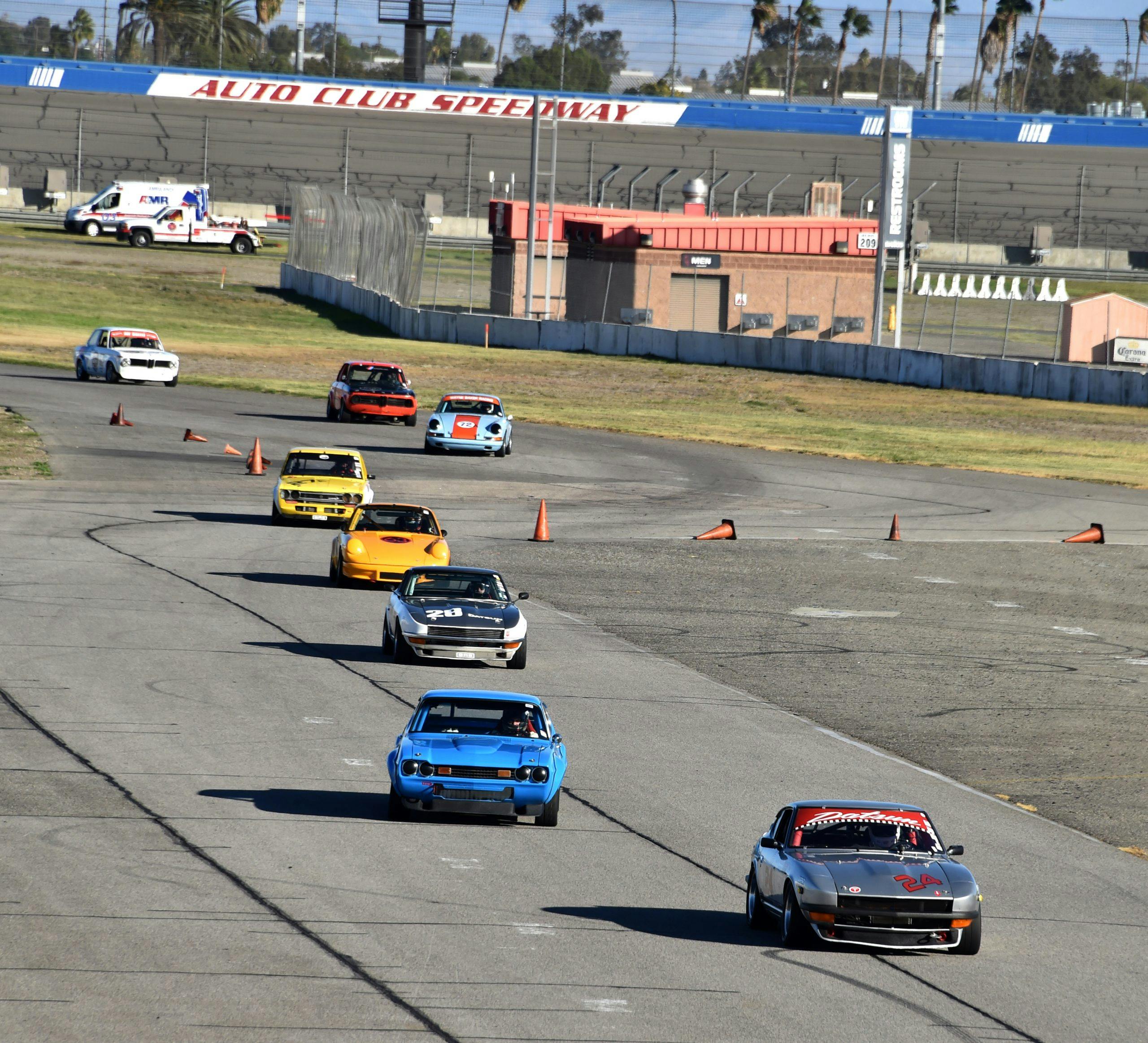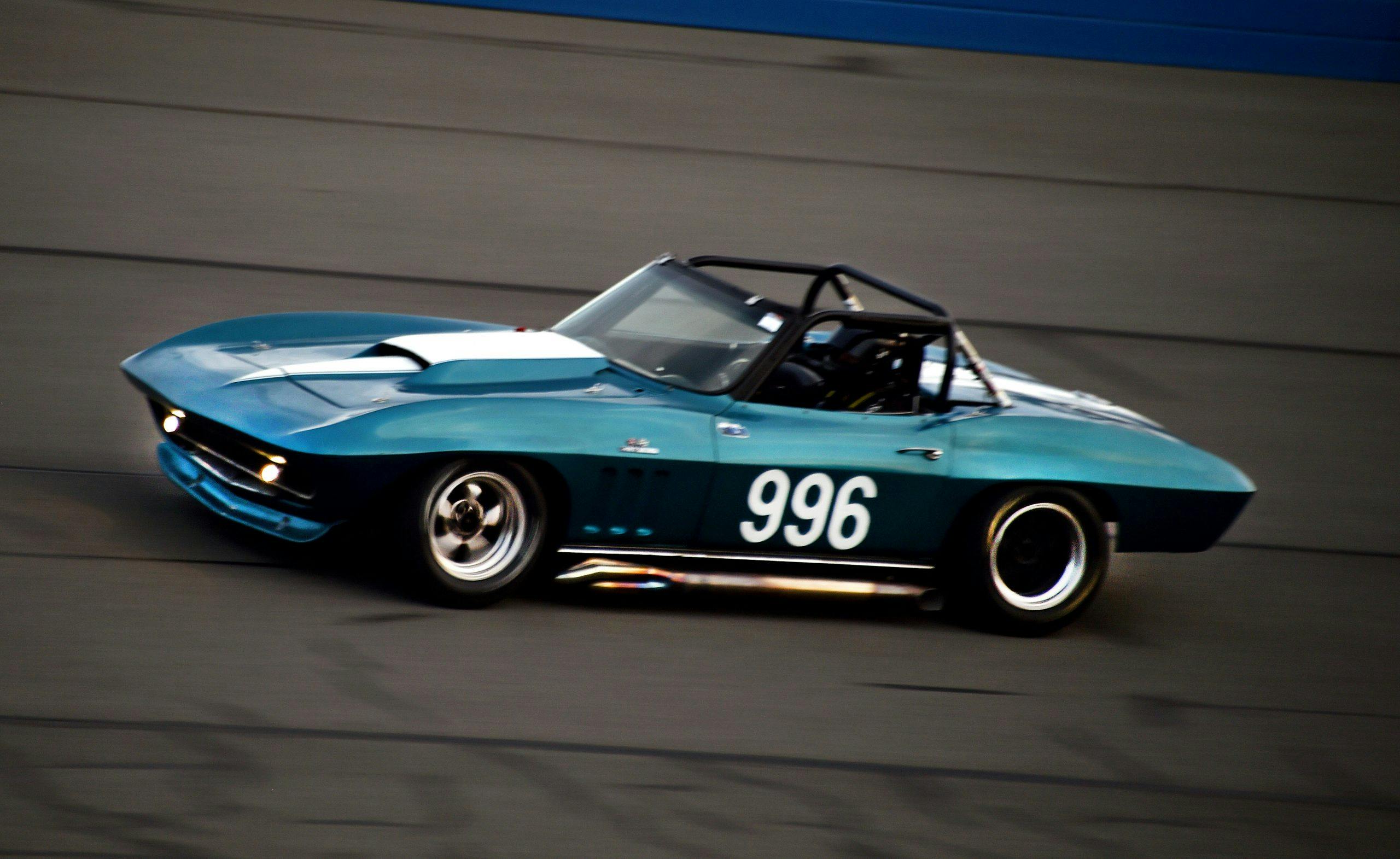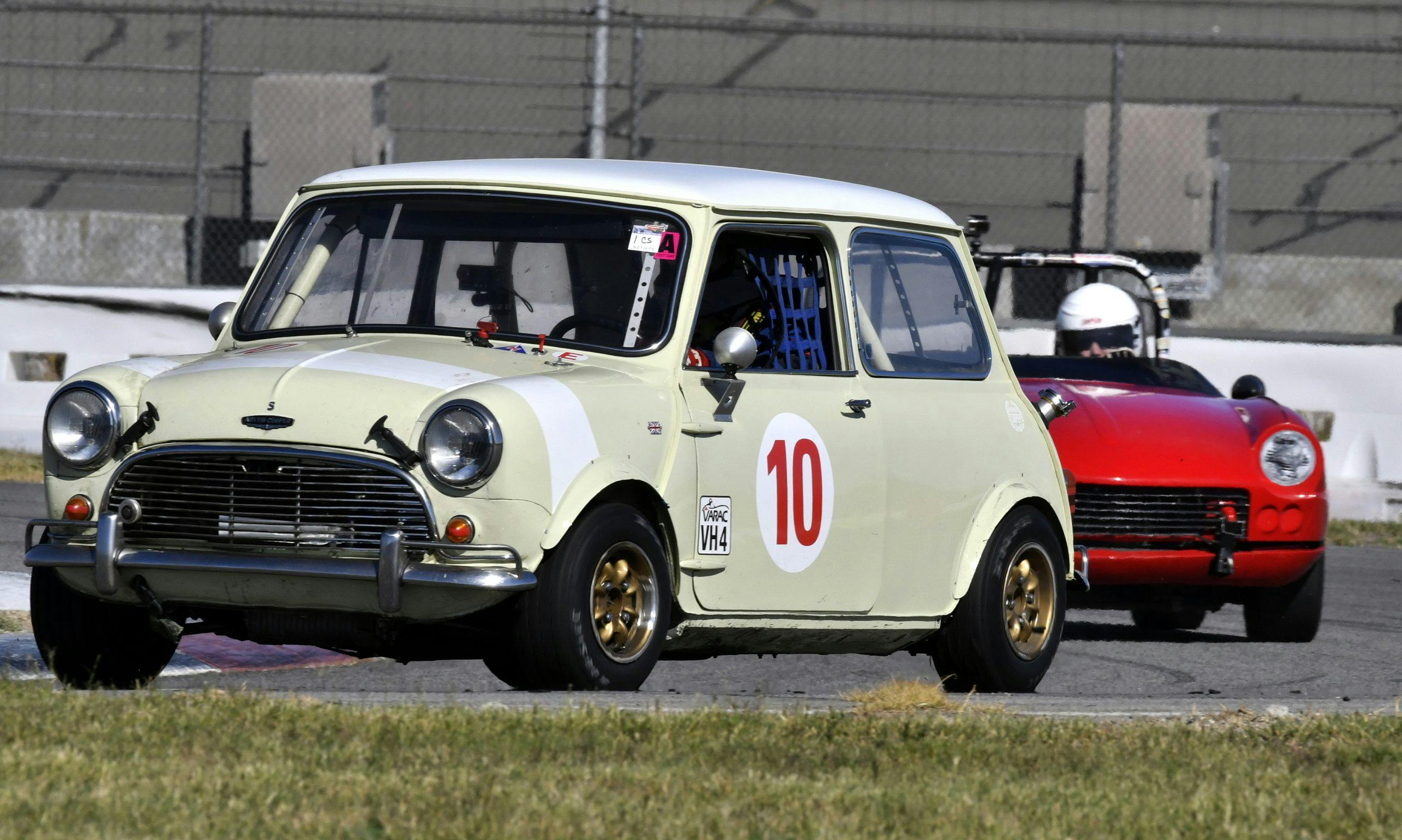Media | Articles
SVRA’s So-Cal Speed Tour thrills amid Auto Club Speedway’s tumultuous future
Auto Club Speedway almost died on the vine. In 1995, a short time before motorsports icon Roger Penske built the track, known then as California Speedway, the Captain reported that finding 500 acres in California and obtaining environmental approval to build a track scared-off his investors. Despite the investor woes, Penske eventually found his land on a deserted steel mill property in Fontana, California, 50 miles east of Los Angeles and practically next door to the site of the old Ontario Motor Speedway. Assisted by former L.A. Rams linebacker Les “Coach” Richter, Penske’s group erected a two-mile banked D-shaped oval with an interior test circuit, a 2.8-mile sports car course with 21 turns, a motorcycle course and drag strip. Fontana’s motorsports megaplex was born.

Marlboro Team Penske driver Paul Tracy became the first driver to test the speedway, and on May 5, 1997, NASCAR held its first open test session for their premier stock car series. I attended the inaugural NASCAR race held later that year and photographed Roger Penske and his son Greg cutting the checkered-flag ribbon. Jeff Gordon of Hendrick Motorsports won with a crowd of about 85,000 in the stands, their eyes fixated on the Rainbow Warrior, Dale Earnhardt in his black No. 3, and the rest of the speeding stock car stars.
As it stands now, the race track’s one-lap qualifying record is held by Indy Champ (2003) Gil de Farran at 241.428 mph, achieved on October 28, 2000 at the Marlboro 500. In 2008, the Southern California Automobile Club purchased the naming rights and the track became Auto Club Speedway. Given its proximity to Hollywood, Auto Club has doubled as a film set for many movie racing scenes, including Herbie: Fully Loaded and Ford v Ferrari. Present day, the track known for its high speeds and three-wide racing, is owned and operated by NASCAR.
In addition to NASCAR, Auto Club Speedway has hosted other acts including IndyCar, CART, Japan Grand Touring Cars, and the IROC series. While modern, professional motorsports have graced the course throughout the years, I recently visited a group of vintage racers making laps at the speedway, during the Sports Car Vintage Racing Association’s So-Cal Speed Tour.

The Sports Car Vintage Racing Association (SVRA) was founded by Ford Heacock III in 1978, and since then, has become one of the largest vintage organizations in the US. In 2012, Tony Parella, a motorsports enthusiast since his teen years, purchased the SVRA. Since then, the organization has grown to over 2500 competitor members with events at Watkins Glen International, Sebring, Road America, Sonoma Raceway, Auto Club Speedway, and many more.
Marketplace
Buy and sell classics with confidence
Recently, the SVRA held a vintage racing weekend at Auto Club, with 12 race groups from small displacement production sports cars to Formula cars (Formula Ford celebrated as the feature event), GT sports cars, and vintage stock cars. Under the SVRA banner, about 80 drivers brought their historic race cars to challenge the 21-turn asphalt sports car course. While winning is ideal, the SVRA motto is “safe, fair and fun competition for the enjoyment of our competitors, their crews and our fans.”

As a prelude to the racing action at Auto Club, the Hagerty Cars and Caffeine Car Show showcased classic, vintage, and exotic collectible cars, trucks, and motorcycles. All exhibitors were invited to roar around the track one long, glorious pace lap. A collector named Nemo showed his 1961 Corvette with the original 283 that he has had for 16 years. Nemo said, “I come to these events to meet up with friends and share ideas for car projects.”
One of the most admirable features of SVRA’s So-Cal Speed Tour at Fontana, aside from the racing, is that the event allows spectators in the paddock and garage area to meet and talk to their favorite drivers.
Perhaps, a melancholy note for event-goers enjoying the road course configuration: There are plans for the super speedway to be overhauled into a half-mile high-banked oval. COVID postponed to plans to 2023. Even so, SVRA’s future at Auto Club is uncertain, so I interviewed some drivers to see how they felt possibly losing the opportunity to race at this exciting venue.

Todd Strong from Torrance, California piloted a 1975 Titan MK9 Formula Ford and came in third in Group 2. Also known as F1600, the class features entry level, single- seater open-wheel Formula racing machines, all prepared with similar four-cylinder 1600-cc Ford engines. “I’ve raced a number of classes, all Formula cars over the years and it’s the thrill of driving and the adrenaline of racing side-by-side. It is truly a driver’s class because all the cars and engines are very equal. It’s really about who is the better driver. I just retired from Gulfstream Aerospace, so this hobby will become a big part of my life, especially with new friends, in the coming years. The news of the road course being eliminated is a tragedy because this is a fun track and a great design. You never know the reasons behind these decisions. I’ll just continue to race at other tracks around the country and have a blast.”
Group 10 contained GT Sports cars between 1973 and 1999, including NASCAR Cup and Xfinity series stock cars. Dan Verstuyft from Paso Robles owns and drives a 2001 UPS-sponsored Ford Taurus from Robert Yates Racing that was originally driven by Dale Jarrett back in the ‘90s. Known as “the Mule,” the car was originally built by Laughlin Racing for Davey Allison but Jarrett took over in the mid-90s. Verstuyft has had the car since 2006 and been racing it to this day as a hobby while retired from being an aerospace engineer that worked on the Apollo space craft. “I raced this car about eight times at this track which is very important to me cause it’s a challenging road course but luckily Road America is still running, so when Auto Club is gone, I’ll still fulfill my dreams. Of course, the friendships and people you meet to share stories and experiences is part of the whole reason for the racing weekend,” says Dan with an ear-to-ear smile.
Val Ascencio from San Clemente took first place in Group 8, driving his yellow ’68 Porsche 911 2.5-liter sports car. “I’ve had this car for five years. I’m not the fastest guy out there but the car is very reliable as it starts every race and finishes every race which assures me we are doing everything just right. I’m a physician and there are three things that keep my total concentration: 1) operating on people 2) photography and 3) driving. It’s the only time where I have no troubles in the world. I have no issues of any kind, nothing hurts, nothing aches, and I get a feeling of accomplishment. This news that the road course will be gone is terrible, but racing really dominates our social life, so all this will continue at other tracks,” said the good doctor as he loaded his 911 in the trailer.
In Group 1, small displacement production sports cars we spoke with Steve Meline from Santa Ana, piloting a red 1965 Triumph Spitfire that’s been a race car for twenty years. ‘This is my rookie year at 74 years old and they thoughtfully put my age on the side of the car,” said Meline proudly. “It’s been a lifetime dream. I’ve always had “Walter Mitty” moments, vicariously enjoying vintage racing while I was working as a probation officer and an attorney.” Meline added, “This was an instant community to me. My mechanic Joe and the entire crew just enjoy each other so much, as it’s a much deeper experience that just the cars. There are a lot of guys our age that hang out at country clubs … I don’t want to follow a white ball around the grass. I feel very fortunate that I’m able to run this course before it disappears. That will be a tremendous loss.”
Since its early days, Auto Club Speedway has endured. The reconfigured race track will likely march on, while local vintage racers will be forced to find a new home. Maybe its Thermal, perhaps Chuckwalla, or maybe they can shirk the trend, and find some investors for a new So-Cal road course.



































































